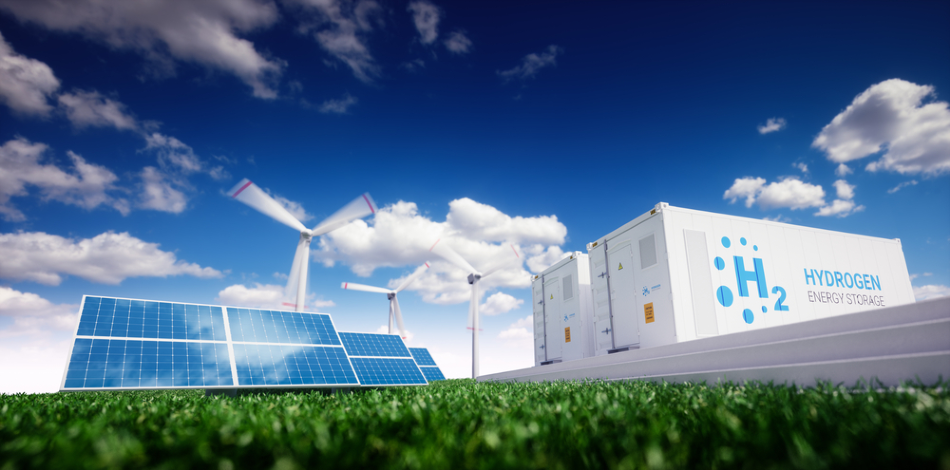
Image Credit: petrmalinak/Shutterstock.com
Following growing environmental concerns, a recent surge in the use of renewable energy sources has posed a challenge to humanity. Most renewable energy sources, including the sun and wind (which are also the most popular), are highly volatile as energy generation depends heavily on chaotic weather conditions.
Renewable energy generation on its own is incapable of consistently meeting the energy demand. If this problem is not solved, a transition to the renewable-dominated energy sector is impossible.
A way to solve it is to introduce energy storage. When wind and sun are plentiful, the energy surplus can be stored until the demand is higher. The concept is rather simple but, until recently, the only widely used grid-scale energy solutions such as pumped hydropower plants and household-scale energy storage were almost unheard of.
However, energy infrastructure is changing and large centralized powerplants are being replaced by smaller distributed generation centers, such as small wind farms or solar panels on the rooftops of private homes. These, in turn, require new and smaller-scale energy storage options. This article will cover the most trusted and most ambitious of the technologies that contest to meet this demand.
Lithium-Ion Batteries as Global Energy Storage
From mobile phone and electric vehicle batteries to large grid-scale solutions – lithium-ion technology now accounts for more than 90% of global energy storage capacity (excluding pumped hydro). This share was approximately 30% in 2012.
The rapid increase in the use of this technology is attributed mainly to its dropping prices. Bloomberg New Energy Finance predicts that the price of Li-ion technology will further decrease almost two-fold from 2017 to 2025.
Low cost is, however, not its only perk. Although Li-ion can store energy for up to six hours only, these batteries are particularly light (high energy density). A recent study found that the material used and greenhouse gas emissions associated with their lifecycle is the lowest among readily available energy storage solutions, matched only by recycled batteries.
However, material use and greenhouse gas emissions do not provide a complete picture of the environmental impact of technology. Concerns are increasingly raised about the environmental impact of lithium mining operations, which contaminate and deplete large amounts of water (usually in already water-deprived regions) and harms the soil – factors not evaluated by the mentioned study. Li-ion cells are also prone to catching fire if exploited inappropriately, which raises safety concerns.
Other Electrochemical Battery Solutions
Many other chemistries enable energy storage such as lead-acid and sodium-sulfur. However, fire safety is probably the only factor where these solutions outperform Li-ion technology today, although new concepts are actively being tested in the field.
Flow Batteries for Chemical Energy Storage
A flow battery (or redox flow battery) also stores energy in the form of chemical potential. However, the components are dissolved in a fluid, rather than being contained in stationary electrodes. Although they have a rather low power density, they provide a steady long-term power supply and have long life cycles.
Flywheels for Short-Term Energy Storage
Flywheels are large spinning weights that store energy in their rotation. Although ill-suited for long-term energy storage, they are particularly useful when load-leveling for intermediate to large battery systems and are known for their long-life cycles.
Technical limitations (such as quick energy dissipation) have rendered flywheels a niche solution and are best-suited for only a handful of tasks.
Hydrogen for Long-Term Energy Storage
Energy density hydrogen can be stored for very long durations of time, until finally recombined with burned oxygen, emitting energy in the process.
The mechanism requires no moving parts, allowing for long battery lifespans and producing no toxic waste or greenhouse gas emissions.
It is easy to see why many envision a hydrogen-powered future. The cost of this technology is one main reason for the lack of hydrogen-powered cars and households due to the complexity involved in separating hydrogen from other elements. Critics of this technology also point out that hydrogen is highly flammable and difficult to store.
What Role will Distributed Energy Storage Play in the Future?
Distributed energy storage will play an important role in the future of energy infrastructure and this has been realized in the last 20 years through large-scale, fast-paced research in the field.
As a result, we are currently undergoing a period of rapid technological change and new solutions are constantly being developed. Around 10 years ago, Li-ion technology took a clear lead in this race for new storage technology and is expected to develop further in the future. However, future developments of other electrochemical or hydrogen-based approaches may provide strong competition.
Sources and Further Reading
Disclaimer: The views expressed here are those of the author expressed in their private capacity and do not necessarily represent the views of AZoM.com Limited T/A AZoNetwork the owner and operator of this website. This disclaimer forms part of the Terms and conditions of use of this website.